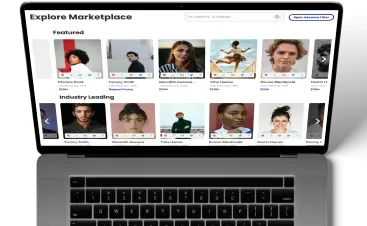Influencer marketing has become a popular strategy for brands looking to reach new audiences and increase their sales. However, measuring the return on investment (ROI) of an influencer marketing campaign can be challenging. In this blog post, we will discuss how to measure the ROI of an influencer marketing campaign and provide tips for maximizing your results.
What Is Influencer Marketing ROI?
ROI is a metric used to evaluate the profitability of an investment. In the context of influencer marketing, ROI measures the revenue generated by a campaign compared to the cost of running it. The goal of any influencer marketing campaign is to generate a positive ROI, meaning that the revenue generated from the campaign exceeds its costs.
Steps for Measuring Influencer Marketing ROI
Measuring the ROI of an influencer marketing campaign involves several steps:
1. Set Campaign Goals
Before launching an influencer marketing campaign, it’s essential to define your goals. Your goals should be specific, measurable, achievable, relevant, and time-bound (SMART). For example, you may want to increase brand awareness or drive sales. It is also good to get as clear as possible with your goals. So, instead of saying “I want to drive sales”, you could say “I want to increase sales of x product 110% and 50% of it should come from TikTok influencer campaigns”
2. Define Your Metrics
Once you have set your goals, you need to define your metrics. Metrics are quantitative measurements that help you track progress toward your goals. Depending on your goals, you may use different metrics such as engagement rate, click-through rate (CTR), conversion rate or revenue. Make sure you pay attention to the metrics that define success for your brand. Every brand is different!
3. Add Up Your Costs
Calculating the return on investment (ROI) of your influencer marketing campaign is essential to determining its overall success and ensuring that you’re getting the most value for your money. To accurately calculate your ROI, it’s important to take into account all costs associated with running the campaign.
These costs may include payments made to influencers for their services or agency fees if you’re working with a third-party provider. Other expenses to consider might include the cost of producing content or creating sponsored posts, as well as any other marketing expenses such as paid advertising or email campaigns that are part of your overall strategy.
By adding up all of these costs and comparing them to the results generated by your campaign, you can determine whether or not it was a worthwhile investment. For example, if you spent $10,000 on an influencer marketing campaign and generated $20,000 in sales as a direct result, then your ROI would be 100%.
It’s also important to note that calculating ROI isn’t just about measuring monetary returns. You should also take into account other metrics such as engagement rates, brand awareness, and customer loyalty when evaluating the success of your campaign.
Overall, by taking a comprehensive approach to calculating ROI and factoring in all associated costs and benefits, you can make more informed decisions about how to allocate your marketing budget and achieve greater success with future campaigns.
4. Calculate ROI of Your Influencer Marketing Campaign
Calculating the returns generated by your influencer marketing campaign is a crucial step in evaluating its success. By using the metrics defined in step two, you can measure the effectiveness of your campaign in achieving its goals. For example, if one of your goals was to drive sales, you could calculate the return on investment (ROI) by dividing the revenue generated by the cost of the campaign. So, if you invested $5k in an influencer marketing campaign and it resulted in $10k in sales, then your ROI would be ($10k – $5k) / $5k = 100%. This means that for every dollar invested in the campaign, you earned one dollar back. It’s important to note that ROI is just one metric and should be considered alongside other key performance indicators such as engagement rates, reach, and brand awareness to get a complete picture of your campaign’s impact.
5. Analyze Your Results
Analyzing the results of your influencer marketing campaign is the final step in evaluating its success. Once you have calculated the returns generated by your campaign using the metrics defined in step two, you need to compare them with the costs incurred during the campaign. If your returns exceed your costs, then your campaign was successful and achieved a positive ROI. However, if your returns do not meet or exceed your costs, then you may need to re-evaluate your strategy and make changes to improve future campaigns. It’s also important to evaluate whether the returns meet or exceed expectations based on your initial goals and metrics. For example, if one of your goals was to increase brand awareness and you achieved a high engagement rate but did not see a significant increase in brand recognition, then you may need to adjust your approach for future campaigns. By analyzing and evaluating the results of each campaign, you can continually refine and improve your influencer marketing strategy for maximum impact and return on investment.
Tips for Maximizing Influencer Marketing ROI
Here are some tips for maximizing the ROI of an influencer marketing campaign:
1. Choose Relevant Influencers
Choosing the right influencers is a critical step in developing an effective influencer marketing strategy. It’s crucial to select influencers whose audience aligns with your brand and target market to ensure that your message resonates with potential customers. By partnering with relevant influencers, you can tap into their existing following and increase the reach of your campaign while also building trust and credibility with their audience. This can lead to higher engagement rates, increased brand awareness, and ultimately more conversions. Additionally, working with influencers who are passionate about your product or service can result in more authentic content and a stronger connection between your brand and their followers. Ultimately, selecting relevant influencers is essential for creating a successful influencer marketing campaign that achieves measurable results and drives business growth.
2. Set Clear Expectations
One of the keys to a successful influencer marketing campaign is setting clear expectations with influencers from the outset. This includes outlining deliverables such as content creation, posting schedules, and any other specific requirements that are essential to achieving your campaign goals. By establishing these expectations upfront, you can help ensure that everyone is on the same page regarding what needs to be done and when.
Clear expectations also help to streamline the communication process between your team and the influencers you’re working with. When everyone knows exactly what’s expected of them, it’s easier to coordinate efforts and ensure that campaigns run smoothly and efficiently.
In addition, setting clear expectations can help prevent misunderstandings or miscommunications that could potentially derail your campaign. It allows both parties to agree on deadlines, quality standards, and other critical details before work begins. This way, there are no surprises or disappointments along the way.
Ultimately, setting clear expectations with influencers helps ensure that campaigns are executed effectively and efficiently while also building a strong foundation for future partnerships. By taking the time to establish these guidelines upfront, you can maximize your chances of success and achieve your marketing objectives more efficiently.
3. Monitor Performance
Monitoring the performance of your influencer marketing campaign is essential for ensuring its success. By tracking key metrics such as engagement rates, reach, and conversions, you can gain valuable insights into how your campaign is performing and make data-driven decisions to optimize it.
One of the benefits of monitoring performance throughout a campaign is that it allows you to identify trends or patterns that could be impacting its effectiveness. For example, if you notice that engagement rates are dropping off after a certain point in the campaign, this could indicate that your content needs to be refreshed or that your messaging needs to be adjusted.
By using data to inform your decision-making, you can avoid making assumptions or guesses about what’s working and what’s not. This helps ensure that any adjustments you make are based on concrete evidence rather than speculation.
In addition, monitoring performance throughout a campaign allows marketers to be more agile and responsive. If you notice that a particular piece of content is performing exceptionally well, for example, you may want to consider promoting it further or creating more content along similar lines. Conversely, if something isn’t resonating with your audience as well as expected, you can adjust the course before too much time and resources have been invested.
Overall, monitoring performance throughout an influencer marketing campaign is critical for maximizing its impact and achieving your marketing goals. By staying vigilant and responsive to changes in real-time data, you can fine-tune your approach and deliver better results over time.
4. Leverage Micro-Influencers
Micro-influencers are social media users who have a smaller following than traditional influencers, typically between 1,000 and 100,000 followers. While their audience size may be smaller than that of larger influencers, micro-influencers often provide higher engagement rates at lower costs due to their more niche audiences.
Because micro-influencers have a smaller following, they tend to have more focused audiences that share specific interests or characteristics. This means that their followers are often more likely to engage with the content they post since it’s targeted towards their personal preferences. Followers of micro-influencers also tend to trust them more than larger influencers because they perceive them as being more authentic and relatable.
Additionally, working with micro-influencers can be more cost-effective than partnering with larger influencers. Since they typically have fewer followers and less demand for sponsored content collaborations, they may charge lower fees or be willing to work in exchange for products or services instead of monetary compensation.
Another advantage of working with micro-influencers is that they often have higher conversion rates than larger influencers. This is because their audiences are generally more engaged and invested in the content they produce, which can lead to increased sales or conversions for your brand.
Overall, partnering with micro-influencers can be an effective strategy for brands looking to maximize engagement rates while keeping costs low. By leveraging the power of niche audiences and building relationships with up-and-coming influencers, you can create compelling campaigns that resonate with your target audience and drive real results for your business.
Conclusion
Measuring the ROI of an influencer marketing campaign can be challenging but is essential for determining its success and making informed decisions about future investments in this area. By following these steps and tips outlined above when planning and executing campaigns; marketers can maximize their chances of achieving positive returns while also building relationships with influential individuals who can help grow their business over time. If you are looking to run high-ROI influencer marketing campaigns in 2024, join Glewee!





